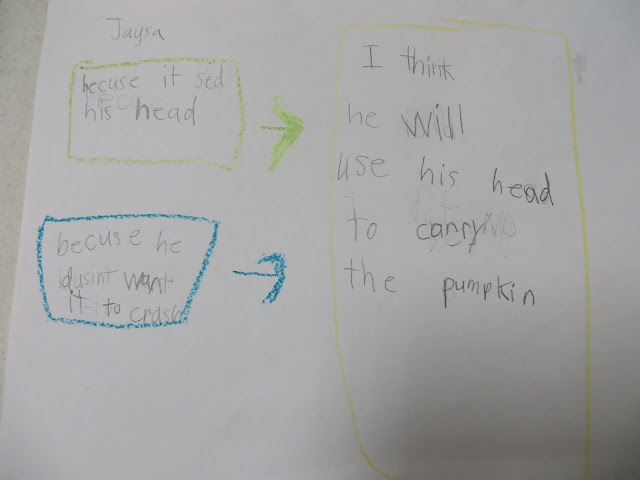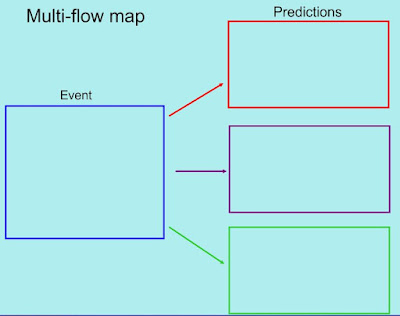Here is the 2nd blog post in a series of Reading Comprehension posts I'm doing on the following comprehension strategies:
~ Schema
~ Making Predictions
~ Making Connections
~ Inferring
~ Questioning
~ Visualizing
~ Summarizing
(These strategies will be linked once new blog posts are up and running- feel free to follow my blog and/or bookmark this page so you can check back!)
~ Schema
~ Making Predictions
~ Making Connections
~ Inferring
~ Questioning
~ Visualizing
~ Summarizing
(These strategies will be linked once new blog posts are up and running- feel free to follow my blog and/or bookmark this page so you can check back!)
As you saw in my schema post, I love to start my reading comprehension units by teaching students a song about the topic we are learning! This song is sung to the tune "Twinkle, Twinkle, Little Star".
(There will be a song for each Reading Comprehension strategy, too, so stay tuned for future Reading Comprehension blog posts!!)
After we learn our song, I go into my Smartboard lessons (also now available for use with PowerPoint!) These lessons last me all week and the kids love them!
Each day starts with a quick slide to review the comprehension strategy.
Then, the introduction slide is followed by an activity(ies). One thing I love about this unit, is that it has a lot of graphic organizers to use throughout the week to help students record their predictions! When we write our predictions, we also write what we used to make our prediction: text clues, picture clues, or schema.
One of my favorite books to use to make predictions is Shark Trouble!
I usually use this book at the beginning of our making predictions unit. We stop about halfway through the story when the chimps are trying to figure out ways to get to each other and I ask students to predict how they might solve their problem. I allow them to write a simple prediction and illustrate it.
Then, the next day, I like to use this book, We're Going on a Leaf Hunt, because it is really easy for students to use text clues to make their predictions.
I stop at this page and read it, but don't show them the pictures.
Then, I have them make their predictions and tell why they chose that prediction. Basically, this sets them up to feel successful when making predictions because they can easily use "because it said it was black and white" as their text clues.
I even did it with a preschool group and look at what they drew and said!
They are so cute!
I also did this anchor chart with the preschool group. We read the book The Little Scarecrow Boy and I had the students predict whether or not the little boy would scare the crows. They drew pictures of what they thought his scary face looked like!
After a week of using my Smartboard lessons and activities, I am ready to break out my choice board! I use informal assessments of my students (their work in guided reading groups, as well as the activities with the Smartboard lessons) to decide whether or not they are ready to do this choice board and its activities independently or as a whole group.
Either way, we start with at least one activity whole group to model how to do the choice board. Sometimes I number the board and let my students pick their favorite, but choice boards are also an incentive in my classroom and my students lost their incentive this particular day, so I chose their activity!
I decided to choose the hardest one, not because they lost their incentive for the day, but because I wanted to make sure they had a firm understanding of how to do this one. The activity has students stop about halfway through their book and make a prediction as to what will happen next using a multi-flow map (which is the tricky part!). We used the book, The Runaway Pumpkin, and I stopped at the spot where it says "But Poppa Baxter used his head and..."
They wrote their predictions to the right and their supporting clues to the left.
When I read the ending, this student said, "Oh, he used his brain, not his head!!" It is sweet how literal they can be :)

If students are ready for the choice board, I put it in a center for them. They choose activities throughout the week to complete and turn in. The activities are differentiated which makes it even better! Red choices are geared toward your lower performing students, while green choices are for your higher performing students.
(This is actually a picture of my questioning choice board but you get the idea!)
If they aren't ready for the choice board, we do the activities whole group. I put the choice board under the document camera (or projector) and students vote on the activity they want to do that day. Doing the activities whole group adds at least another week and a half to my schema unit and the kids love it!
I have so much fun teaching about making predictions with my students! What activities do you use to teach making predictions?
Related products from my store:
Predicting Smartboard Lessons and Activities!
Predicting Choice Board and Activities!
Reading Comprehension Smartboard Lessons and Activities Bundle!
Reading Comprehension PowerPoint Lessons and Activities Bundle!




























No comments:
Post a Comment